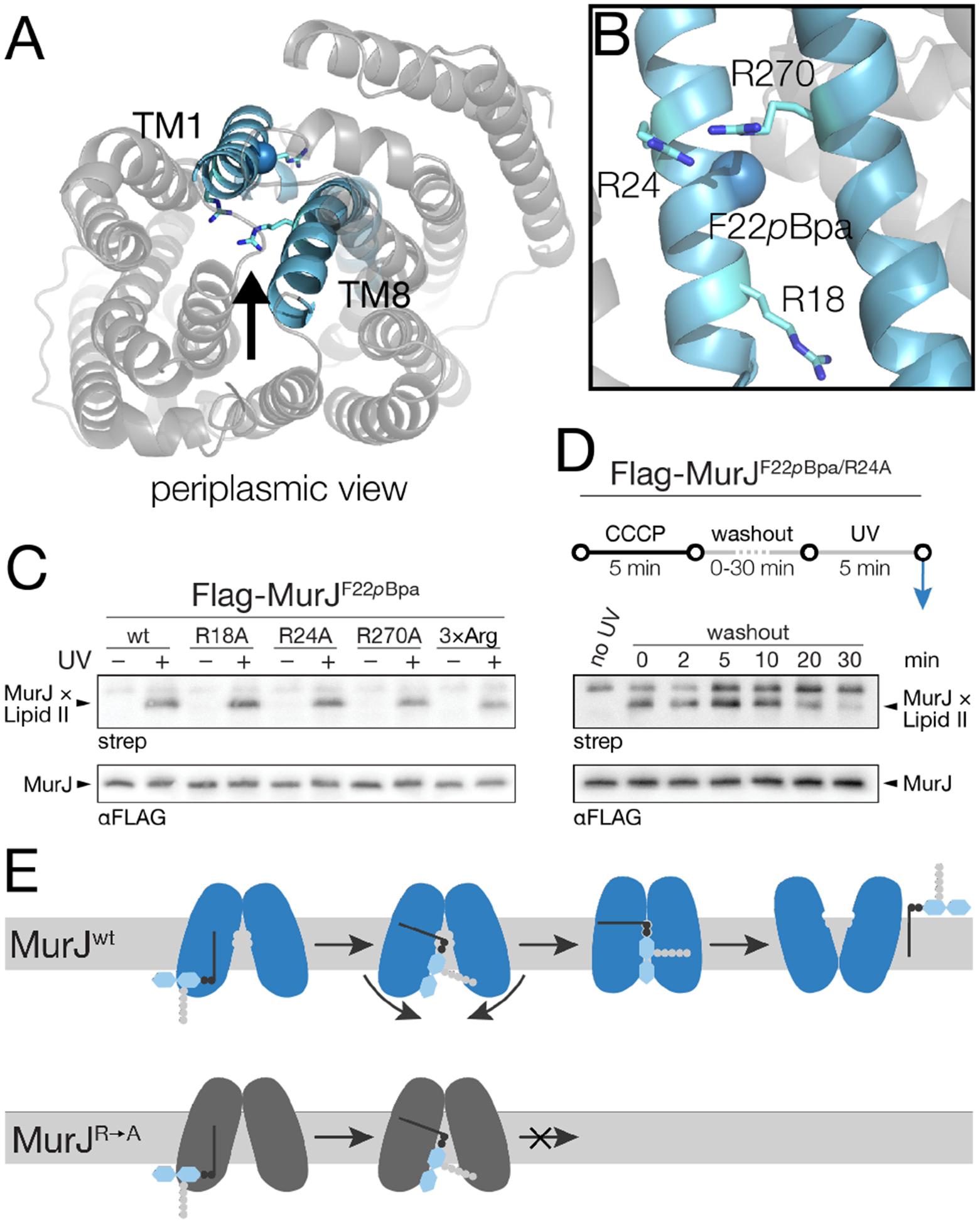Figure 4.

Lipid II recognition by three essential arginine residues triggers a conformational change in MurJ required for transport. (a) Crystal structure of E. coli MurJ in an inward-facing conformation (PDB ID code 6CC4), viewed from the periplasm. (b) TM1 and TM8 of MurJ as viewed from the central cavity (a, arrow). Essential residues R18, R24 and R270 surround photocrosslinking site F22pBpa. (c) Cells harboring both a wild-type murJ allele and Flag-MurJF22pBpa containing one or three R-to-A mutations were assessed for MurJ×Lipid II formation. (d) Cells in c were assessed for MurJ×Lipid II formation upon restoration of membrane potential as described in Figure 3b. (e) Proposed model depicting the role of Lipid II headgroup recognition by MurJ. The lipid tail of Lipid II first associates with MurJ near F22. Subsequent head-group recognition by R18, R24, and R270 mediates conformational rearrangement into an outward-facing state from which the substrate can be released. See also Figure S14–S15.
